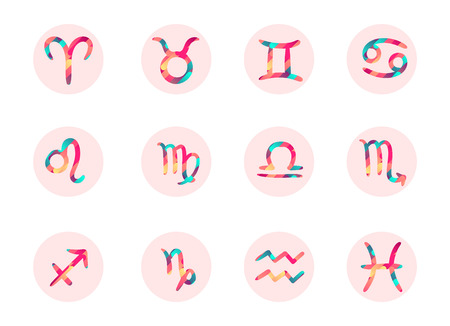Introduction to Bereavement in the UK Context
Grief and bereavement, though universal experiences, are shaped profoundly by the cultural, historical, and social fabric of each society. In the United Kingdom, the process of navigating loss is steeped in unique traditions and nuanced expectations that both guide and constrain the journey of mourning. British society, with its renowned reserve and subtlety, often frames bereavement within a context of quiet dignity and understated ritual. From the gentle tolling of church bells to the observance of Remembrance Day poppies, rituals surrounding death and loss are imbued with centuries-old symbolism. Yet beneath this surface lies a complex interplay of individual emotion and collective custom. Social expectations may encourage composure over outward displays of sorrow, urging mourners to “keep calm and carry on”—a phrase rooted in wartime resilience but echoed in modern responses to loss. The British approach to bereavement also reflects its multicultural tapestry, where regional customs—from Scottish wakes to London’s diverse faith-based ceremonies—add depth to the national experience of grief. As we explore the landscape of bereavement in the UK, it becomes clear that healing is not merely a personal journey but one navigated through a constellation of traditions, shared silences, and evolving communal narratives.
2. Historical and Cultural Links Between the Moon and Emotion
The moon’s influence on the human psyche has long been woven into the fabric of British culture, stretching from ancient folklore to modern public discourse. Throughout history, the lunar cycle has been both a timekeeper and a silent companion to those enduring bereavement and emotional upheaval. In this context, exploring how the phases of the moon have shaped collective beliefs about mood and emotion reveals a deep-seated connection that persists in the UK’s cultural consciousness.
Folklore and Superstition: The Lunar Lens
British folklore is rich with tales attributing significant power to the moon, particularly regarding mental states and emotional well-being. Terms such as “lunacy” have their origins in the belief that full moons could provoke madness or heightened sensitivity. Rituals marking new moons or full moons were often seen as auspicious times for reflection, healing, or closure—an idea that continues to echo in rural traditions and local customs across the British Isles.
Lunar References in British Literature
Literature from Shakespeare to contemporary poets frequently invokes lunar imagery to convey sorrow, longing, or transformation. For example, Shakespeare’s characters often lament beneath moonlit skies, using lunar metaphors to articulate grief or hope. Such references embed the moon as a symbol of cyclical renewal—mirroring the emotional journey of loss and recovery.
Public Discourse and Modern Perceptions
Even today, British media occasionally reflects lunar cycles in reporting crime rates, hospital admissions, or public mood shifts during certain lunar phases. While scientific consensus remains cautious, these narratives shape communal attitudes towards the moon’s perceived effects on our emotional state—particularly during periods of vulnerability such as bereavement.
| Lunar Phase | Traditional Belief (UK) | Cultural Practice |
|---|---|---|
| New Moon | Time for renewal; setting intentions | Quiet reflection; planting symbolic seeds of hope |
| Full Moon | Heightened emotions; clarity or unrest | Vigils; sharing stories of loved ones lost |
| Waning Moon | Letting go; release of sorrow | Mourning rituals; writing letters to the deceased |
| Waxing Moon | Growth and gradual healing | Engaging in support groups; seeking guidance from elders |
This enduring interplay between lunar cycles and emotional experience underscores how celestial rhythms have offered comfort, structure, and meaning to those facing loss within British society. Understanding these historical connections provides context for contemporary approaches to emotional healing and bereavement support in the UK.

3. Modern Perspectives: The Science Behind Lunar Influence
In contemporary British society, the notion that lunar cycles might impact our emotional wellbeing—particularly during periods of bereavement and loss—has shifted from folklore to a subject of active scientific inquiry. Researchers across the UK have increasingly sought to understand whether the phases of the moon bear measurable influence on mental health, especially as communities seek holistic ways to navigate grief.
The Search for Empirical Evidence
Recent studies conducted by British universities have rigorously examined correlations between lunar phases and psychological states. While some findings suggest a marginal increase in sleep disturbances or mood fluctuations around the full moon, the prevailing consensus within the scientific community is cautious. Large-scale analyses, such as those undertaken by the NHS and UK-based research institutes, often report minimal or statistically insignificant effects of lunar cycles on mental health outcomes. Yet, these nuanced results do not entirely dismiss centuries-old observations but rather encourage a more critical analysis rooted in data.
Cultural Contexts and Public Perception
Within the UK, public attitudes towards lunar influence remain varied. For some, particularly in rural or coastal areas with deep-rooted traditions, the moon retains symbolic significance in marking life’s rhythms—including mourning rituals and communal remembrance events. However, urban populations tend to align more closely with scientific scepticism, viewing lunar associations as matters of personal belief rather than empirical fact.
Ongoing Debates and Future Directions
The debate continues among British psychologists and social scientists: does the moon exert a subtle yet meaningful sway over our collective psyche during times of loss? Or are perceived connections simply artefacts of cultural narrative and confirmation bias? As new research emerges, especially from interdisciplinary teams blending astronomy, psychology, and anthropology, there is hope for a richer understanding of how cosmic patterns might interlace with human experience—offering both comfort and insight for those journeying through grief in modern Britain.
4. Bereavement Rituals and the Lunar Cycle
The intricate relationship between bereavement rituals and the lunar cycle has found renewed resonance in contemporary British culture. While ancient Celtic traditions often aligned mourning periods with phases of the moon, today’s practices reflect a blend of historical reverence and modern sensibilities. Across the UK, individuals and communities are weaving lunar symbolism into their responses to loss, creating nuanced frameworks for both private reflection and collective remembrance.
Integration of Lunar Phases in Mourning Practices
For some, each phase of the moon offers a distinct emotional landscape upon which to navigate grief. The New Moon, shrouded in darkness, is embraced as a time for inward contemplation and acknowledging loss. As the moon waxes towards fullness, mourners may choose to engage in acts that honour the memory of loved ones—writing letters, lighting candles, or planting seeds—mirroring the gradual illumination of night skies and symbolising growth after sorrow. The Full Moon often serves as a focal point for communal gatherings or solitary vigils by rivers, moors, or gardens, invoking clarity and shared healing.
Community Gatherings Aligned with Lunar Events
Contemporary British communities are increasingly organising events that correspond with notable lunar dates. These range from informal circles at local commons to structured ceremonies hosted by charities or faith groups. Such gatherings might include poetry readings, storytelling, or shared silences under moonlight—each element chosen to foster connection and provide solace. The cyclical return of these events echoes nature’s rhythms, offering comfort through repetition and predictability.
Reflective Traditions Influenced by Lunar Symbolism
Bespoke reflective traditions have also emerged, tailored to individual or familial needs yet inspired by the lunar calendar. Some families mark anniversaries of loss not according to conventional dates but by tracking successive full moons since bereavement, thus entwining personal history with celestial cycles. Others adapt meditation or mindfulness practices specifically for nights when the moon is visible and bright, believing that such alignment can deepen introspection and encourage emotional release.
Examples of Lunar-Inspired Bereavement Activities in the UK
| Lunar Phase | Mourning Practice | Typical Setting |
|---|---|---|
| New Moon | Private journaling; setting intentions for healing | Home; quiet indoor spaces |
| Waxing Crescent/First Quarter | Planting memorial flowers; sharing memories with close friends/family | Gardens; family homes |
| Full Moon | Candlelight vigils; group poetry readings; riverside walks | Parks; riverbanks; community halls |
| Waning Gibbous/Last Quarter | Meditation sessions; releasing rituals (e.g., floating paper lanterns) | Churchyards; village greens; open countryside |
The gentle resurgence of lunar-aligned bereavement rituals in Britain underscores a desire to reconnect with natural cycles during times of profound loss. By looking skyward and moving in harmony with the phases of the moon, mourners find both structure and meaning—a cosmological anchor amidst emotional turbulence.
5. Personal Narratives: Grieving with the Moon
Finding Solace in Shared Experience
Across the United Kingdom, individuals and bereavement support groups have quietly cultivated a practice of aligning their healing journeys with the rhythms of the lunar cycle. These personal narratives offer an illuminating window into how ancient celestial patterns can provide modern comfort and structure amidst profound loss. The moon’s waxing and waning becomes more than a nightly spectacle—it evolves into a silent companion through the labyrinth of grief.
Anecdotal Accounts from Across the Isles
In rural Yorkshire, Sarah, recently widowed, recounts attending a monthly “New Moon Circle” organised by her local hospice. She describes how setting intentions for gentle self-care during the new moon phase offered her a sense of renewal—a psychological marker to honour her pain while gently inviting hope. Similarly, in South London, David, who lost his father unexpectedly, found comfort in journaling during the full moon. He shares, “The brightness felt like a spotlight on my emotions. I’d sit by my window, write letters to Dad, and somehow it felt less lonely.”
The Role of Support Groups
Bereavement support groups across cities such as Manchester and Edinburgh have adopted lunar-themed gatherings as part of their healing repertoire. At these events, participants share stories or simply observe moments of silence together under the night sky, marking either the new or full moon. Facilitators note that this shared ritual often alleviates feelings of isolation by creating a communal rhythm—an emotional calendar that transcends individual timelines of grief.
Bridging Tradition and Contemporary Healing
These case studies illustrate how British mourners blend longstanding folk traditions with contemporary therapeutic approaches. Whether lighting a candle at first crescent or meditating during a lunar eclipse, individuals report that synchronising their mourning with lunar phases offers both tangible milestones and subtle reassurance: loss ebbs and flows, just as the moon waxes and wanes. For many in the UK, grieving with the moon has thus become an act of resilience—a way to find meaning and momentum even in the darkest nights.
6. Integrating Lunar Awareness into Bereavement Support
In recent years, UK-based grief counsellors, therapists, and support organisations have demonstrated an increasing openness to holistic approaches that complement traditional bereavement care. Amidst this evolving landscape, the subtle yet profound influence of lunar cycles offers a unique adjunct to established methods of emotional support.
The Case for Lunar Integration
While scientific evidence on lunar impacts is still emerging, many individuals report heightened emotions during particular lunar phases. In the British context—where folklore, seasonal changes, and celestial events have long been woven into cultural consciousness—there is scope for practitioners to thoughtfully acknowledge these influences without compromising clinical rigour.
Practical Applications in Therapy
Therapists might consider gently exploring clients’ experiences around full or new moons as part of reflective practice. This could involve journalling exercises timed with lunar phases, or group sessions that align with significant points in the lunar calendar. Such practices provide structure and rhythm, helping those grieving to externalise and process their emotions within a safe framework.
Community and Ritual
Support organisations can foster communal healing by organising moonlit walks, remembrance gatherings, or creative workshops synchronised with the lunar cycle. These activities not only honour Britain’s rich tradition of marking time by the heavens but also create opportunities for collective mourning and resilience-building.
Ethical Considerations
It remains essential for professionals to approach lunar awareness inclusively and respectfully, ensuring it is presented as an optional adjunct rather than a prescriptive component. For some clients, especially those drawn to nature or historical customs, this integration may offer comfort; for others, traditional psychotherapeutic techniques may suffice. The key lies in offering choice and tailoring support to individual needs.
By weaving lunar awareness into the tapestry of bereavement care, UK practitioners can enrich emotional healing with a sense of cosmic rhythm—a gentle reminder that, even in darkness, there are cycles of renewal and hope.


